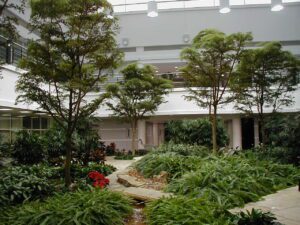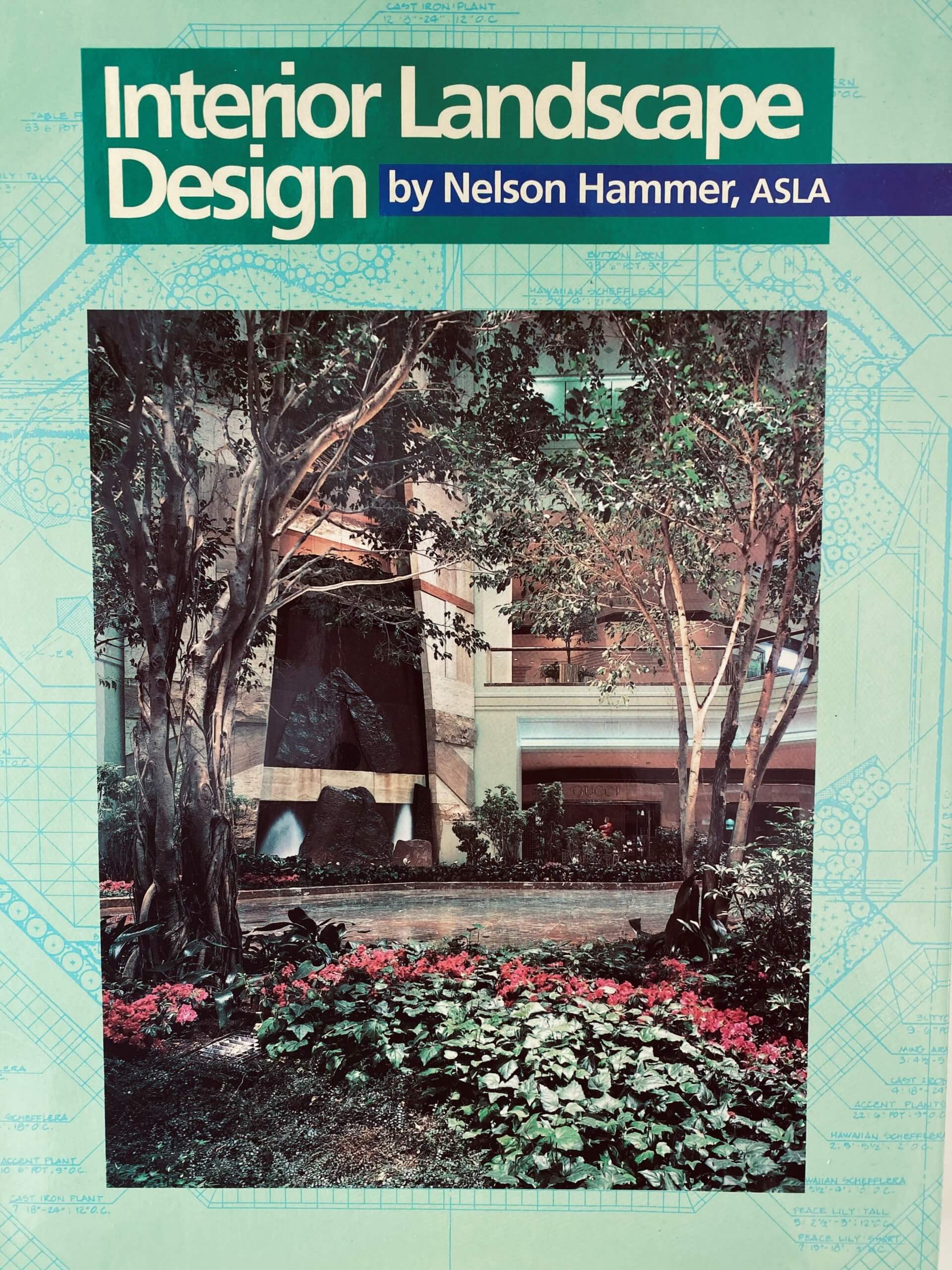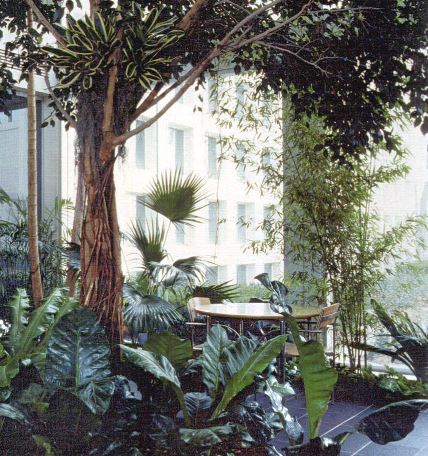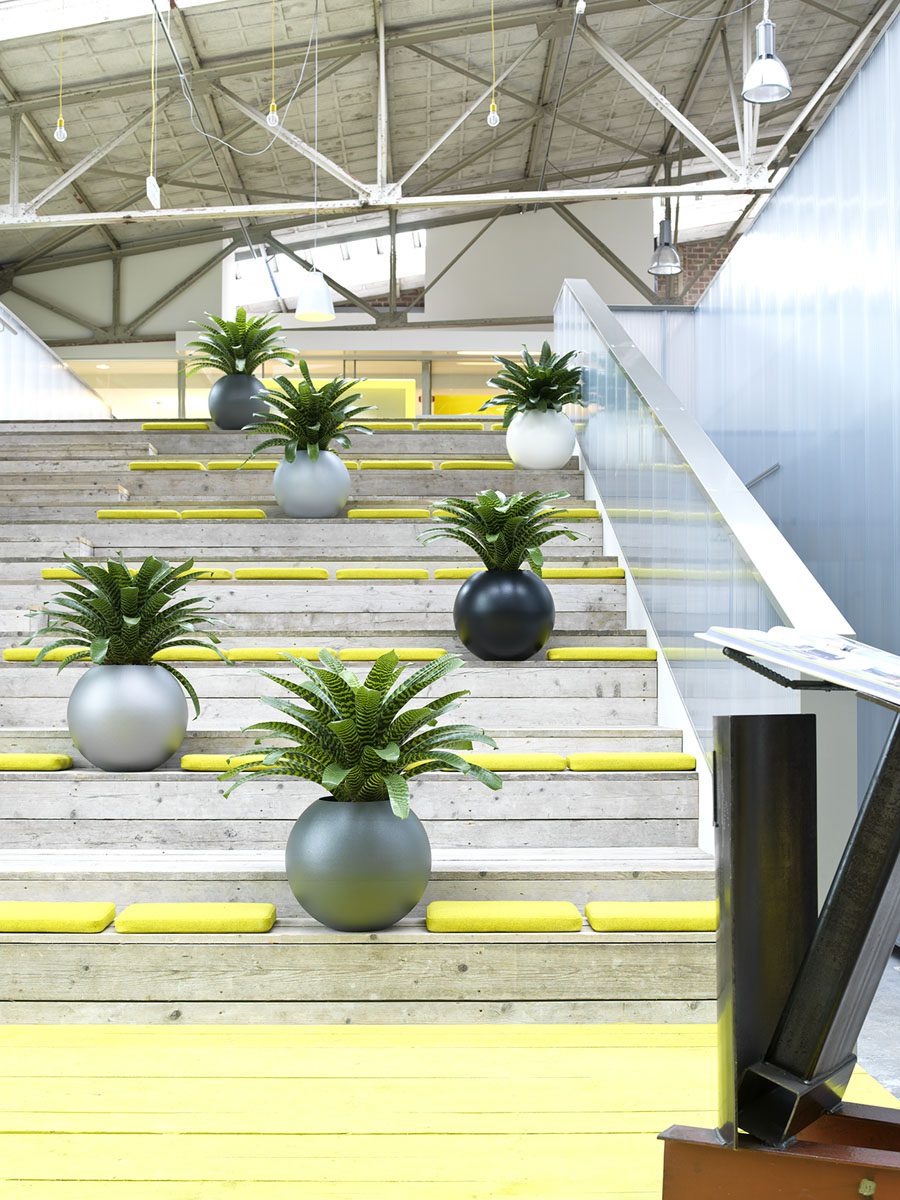In the green design world, interior landscaping, plantscaping, and interiorscaping are often used interchangeably to describe a single niche specialty—bringing plants into built environments for beauty, health, and function. However, within this shared specialty there are nuanced differences in meaning and scope. For businesses, designers, and architects, understanding these distinctions can help clarify project goals and ensure long-term success for indoor plant installations.
At Planterra, we’ve been collaborating on interior plant designs for decades, blending horticultural expertise with design innovation. In this article, we’ll define plantscaping and interior landscaping, highlight their differences, and reference the influential works of Richard L. Gaines and Nelson Hammer, two pioneers who helped shape the modern interior plantscaping industry.
What Is Interior Landscaping?
Interior landscaping—also called interior plantscaping or interiorscaping—is the full-service practice of bringing greenery into indoor spaces and ensuring it thrives long-term.

Interior Landscape in Ann Arbor, Michigan
This includes:
- Design: Selecting plants and containers that align with architecture, lighting, and brand aesthetics.
- Installation: Professionally placing and securing plants for both beauty and safety.
- Maintenance: Providing ongoing horticultural care to keep plants healthy and visually stunning year-round.
Richard L. Gaines’s 1977 book Interior Plantscaping: Building Design for Interior Foliage Plants positioned interior landscaping as a collaboration between architecture and horticulture, stressing that plants are living elements requiring the same attention to performance and compatibility as any other interior feature.
What Is Plantscaping?
While interior landscaping encompasses the entire lifecycle of plants in a space, plantscaping, sometimes called interior plantscaping focuses specifically on aesthetic design and placement.
This design-oriented approach includes:
Visual composition – Layering plants of different heights, colors, and textures for impact.
- Space definition – Using greenery to frame views, divide spaces, or direct foot traffic.
- Seasonal or thematic installations – Rotating plant arrangements to reflect branding or seasonal events.
Nelson Hammer’s 1992 work Interior Landscape Design advanced this design perspective, showing how plants could serve as architectural features, enhancing a space’s mood, flow, and identity.

| Term | Primary Focus | Scope of Work |
|---|---|---|
| Plantscaping | Artistic arrangement of plants | Selection, placement, and visual styling |
| Interior Landscaping | Comprehensive integration and maintenance | Design, installation, plant care, and seasonal updates |
Put simply: plantscaping is the art, while interior landscaping is the full-service commitment that keeps that art alive.
The Influence of Gaines and Hammer
The early works of Gaines and Hammer remain industry benchmarks:
- Richard L. Gaines (1977) emphasized technical plant design, addressing light levels, irrigation, plant physiology, and environmental compatibility.
- Nelson Hammer (1992) brought design thinking into the field, focusing on how plants interact with architecture and influence human experience.
Planterra continues this tradition—balancing science and artistry to deliver high-performing interior plant designs.
Planterra’s Integrated Approach to Indoor Plant Design
Planterra bridges the gap between creative plantscaping and full-service interior landscaping. Our approach includes:
- Custom interior plant design tailored to brand and space.
- Professional installation ensuring plant health and safety.
- Horticultural maintenance programs that keep spaces lush and inviting.
- Seasonal plant rotations for year-round visual interest.
This combination delivers not just a beautiful first impression, but an enduring corporate greenery solution.
Conclusion
While plantscaping, interior landscaping, and interiorscaping are all part of the same niche specialty, the terms carry different emphasis. Plantscaping is the design artistry, interior landscaping is the holistic service that ensures plants remain healthy, vibrant, and integral to the space over time.
For over 40 years, Planterra has honored the principles laid down by Richard L. Gaines and Nelson Hammer—blending technical precision with design excellence to create award-winning interior landscapes.

Interior Plantscape in Auburn Hills, Michigan
As a mature and niche industry, interior landscaping has proven to be resilient and an essential service for building interiors. Many companies, which solely specialize in the interior landscaping trade, have been in business for more than two decades. In the case of Planterra, we have been at it for almost 50 years!
The profession, which resulted due to a shift in architectural materials from ornamental masonry to floor-to-ceiling glass curtain walls, continues to be propelled by architectural design. In the mid-20th century, boxy glass buildings called for plants to soften their hard lines. The abundance of natural light helped solidify commercial buildings as the unofficial homes for the obsequious office Ficus. In present day, improved window glazing and artificial lighting help provide higher quality light to human occupants, which plants also enjoy. As a result, interior landscaping continues to be relevant and an important element in architecture and interior design.
Now, nearly 50 years after launching a business of interior landscaping, Planterra has grown its capabilities and offers specialty design-build installations throughout the USA, as well as interior landscape national account management.
